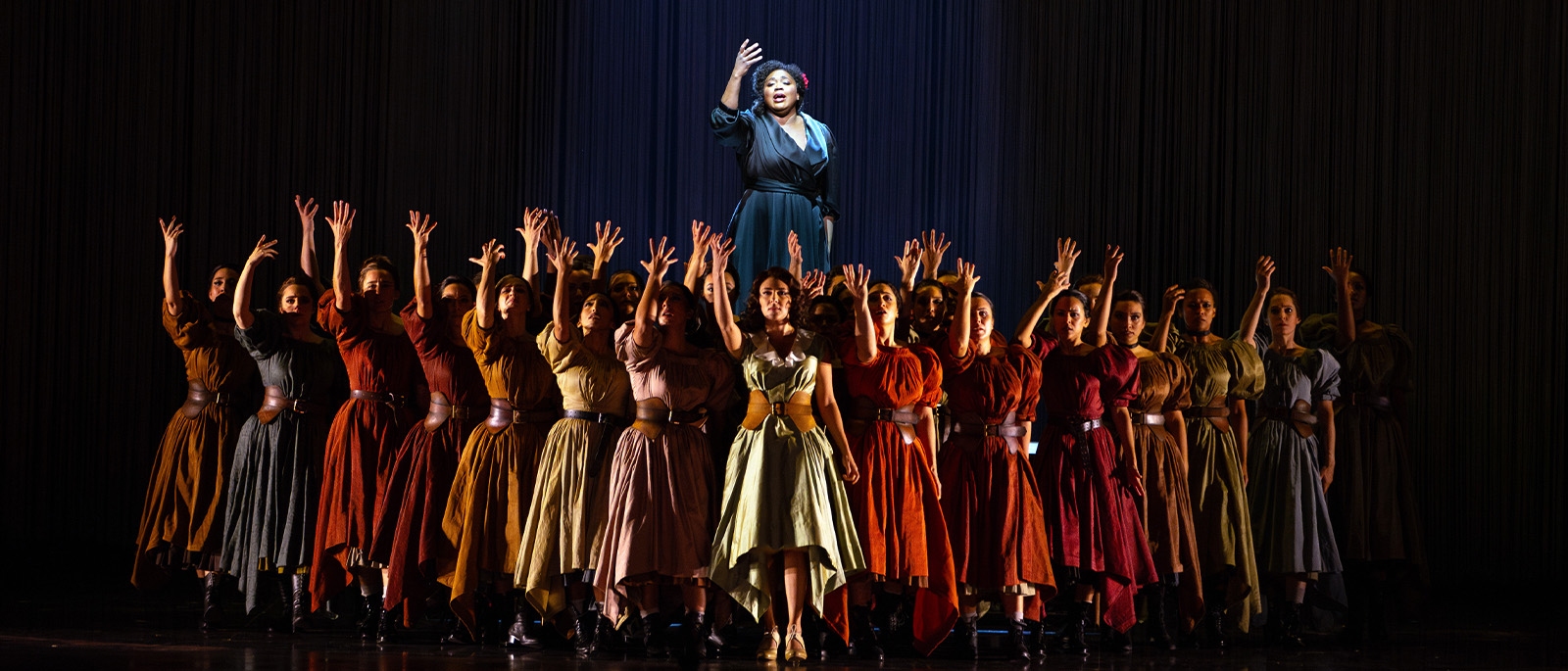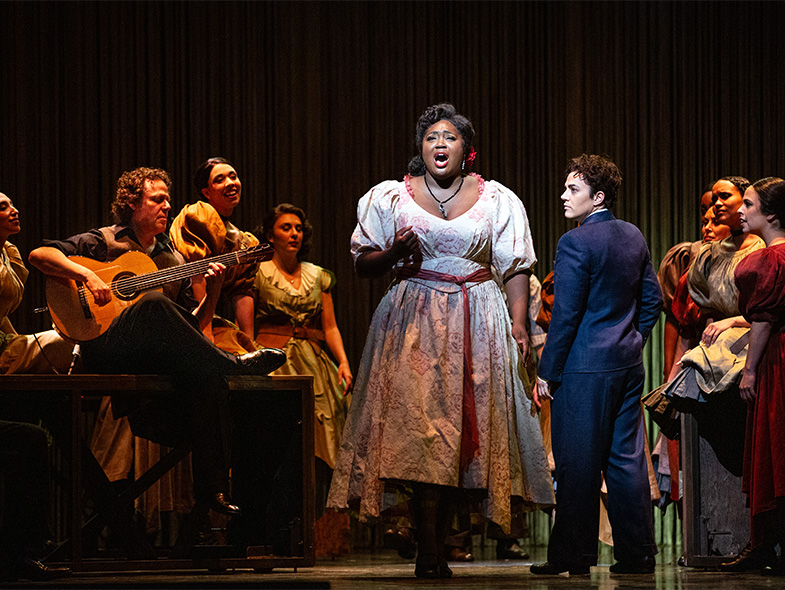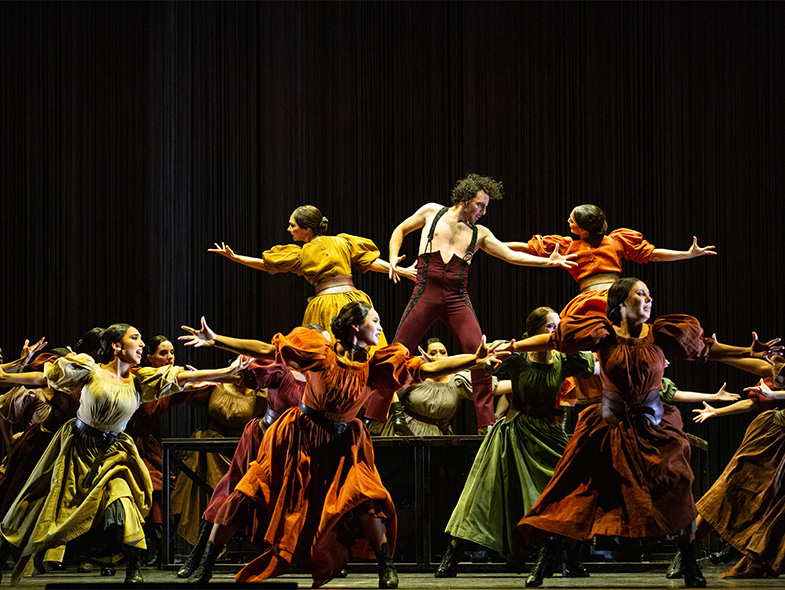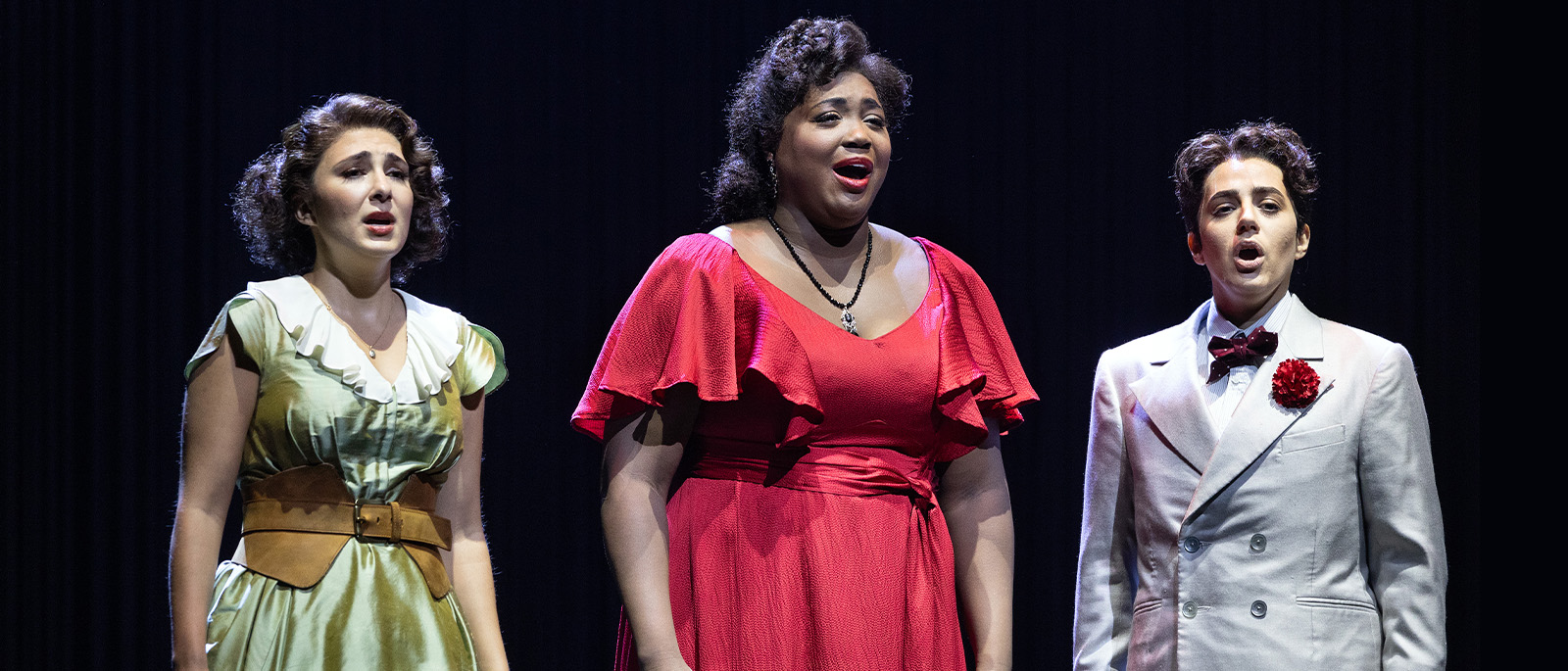
Osvaldo Golijov / LIBRETTO BY David Henry Hwang
Ainadamar
This production ran: Oct 15 - Nov 9
This Production is in the past
Overview
Argentinian composer Osvaldo Golijov’s Grammy Award–winning first opera dramatizes the life and work of poet-playwright Federico García Lorca, who was assassinated by fascist forces at the start of the Spanish Civil War for his socialist politics and homosexuality. His story emerges through the memories of Catalan actress Margarita Xirgu, Lorca’s muse—sopranos Angel Blue and Gabriella Reyes—who reminisces to her student Nuria, portrayed by soprano Elena Villalón. Lorca himself makes a dreamlike appearance, sung as a trouser role by mezzo-soprano Daniela Mack, and flamenco singer Alfredo Tejada completes the principal cast as the Falangist politician Ramón Ruiz Alonso, who arranged Lorca’s execution. Combining features of both an opera and a passion, Ainadamar, conducted by Miguel Harth-Bedoya in his Met debut, crackles with the energy and rhythms of flamenco and rumba, as well as the violent backdrop of civil war, all of which springs forth on the Met stage in a vivid company-debut production by Brazilian director and choreographer Deborah Colker, renowned for her work with Cirque du Soleil.
This production uses gunshot, strobe-light, and haze effects.
Music by Osvaldo Golijov
Libretto by David Henry Hwang
Production a gift of the Walter and Leonore Annenberg Endowment Fund; the Edgar Foster Daniels Foundation, in memory of Richard Gaddes; and The Halff Windham Foundation
Ainadamar is part of the Neubauer Family Foundation New Works Initiative
A co-production of the Metropolitan Opera, Opera Ventures, Scottish Opera, Detroit Opera, and Welsh National Opera
Languages
Languages sung in Ainadamar
Sung In
Spanish
Titles
Title languages displayed for Ainadamar
Met Titles In
- English
- Spanish
- German
Timeline
Timeline for the show, Ainadamar
Estimated Run Time
1 hrs 20 mins
-
House Opens
-
Ainadamar
80 mins
-
Opera Ends

World premiere: Tanglewood, Lenox, 2003 (original version); The Santa Fe Opera, 2005 (revised version)
Described as “an opera in three images,” Ainadamar traces the life of Spanish poet and playwright Federico García Lorca as recounted by his muse and longtime collaborator, actress Margarita Xirgu. Over the course of the opera, Margarita relates episodes from Lorca’s life—his persecution for his political sympathies and his homosexuality, her attempts to persuade him to flee the Spanish Civil War, his death at the hands of the fascist Falangists—and the opera’s tone and structure reflect much of his writing, combining crude realism with transcendent idealism and imbuing the everyday with a sense of mythic ritual.
Creators
Osvaldo Golijov (b. 1960) was born in Argentina to Jewish parents who had emigrated from Romania and Ukraine, and he grew up immersed in all the musical traditions of this cosmopolitan atmosphere. He later moved to Israel, and then studied with celebrated modernist composer George Crumb. His compositional approach freely incorporates all of these diverse influences into a style wholly his own. The opera’s libretto is by David Henry Hwang (b. 1957), an award-winning dramatist whose work spans Broadway (notably, the Tony Award–winning play M. Butterfly), film, television, and opera.

Production
Deborah Colker

Set and Costume Designer
Jon Bausor

Lighting Designer
Paul Keogan

Projection Designer
Tal Rosner

Sound Designer
Mark Grey

Choreographer
Deborah Colker

Flamenco Choreographer
Antonio Najarro

Composer
Osvaldo Golijov

Librettist
David Henry Hwang
Setting

The opera is ostensibly set backstage at the Teatro Solís in Montevideo, Uruguay, in 1969, as Margarita prepares to perform in Lorca’s play Mariana Pineda. As she begins to remember key moments from the past, the scene changes to locations in Spain before and during the Civil War of the 1930s, including the Ainadamar (Arabic for “Fountain of Tears”), where Lorca is believed to have been executed.
Articles
Videos
Music
Golijov’s score combines influences of classical, jazz, folkloric and regional, and flamenco music from a variety of Spanish sources, recalling the rich artistic and social history of the Andalucía region. There are also important sound elements that are not strictly musical at all, such as the dripping of water in the eponymous “Fountain of Tears,” gunshots, and transmissions from Radio Falange. Throughout, the composer melds traditionally operatic solos and orchestral interludes with instrumental and dance passages that draw heavily from the worlds of flamenco and rumba.
